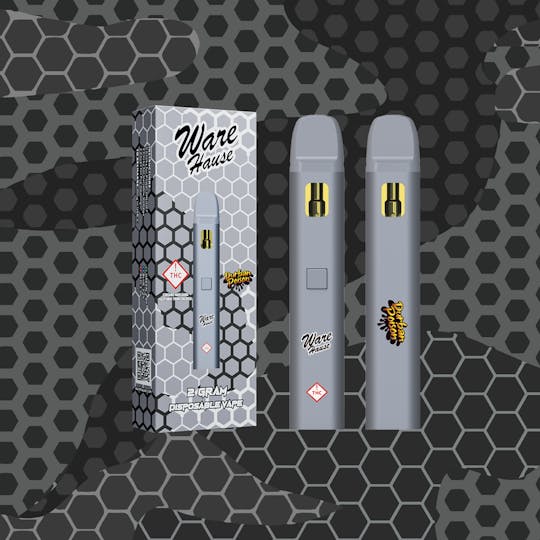
WARE HAUSE 2 Gram Disposable - DURBAN POISON
Top quality 2 Gram Disposable built with high stamina and durability. Sleek hardware with various features like voltage adjustment and a pre-heat function, available in 20+ bold flavors.
UNIQUE FEATURES:
– DISTILLATE & TERPENES
– COMPACT HARDWARE FOR EASY MOBILITY
– DURABLE BATTERY & LONG-LASTING TASTE
– RECHARGEABLE USB-C
– ADJUSTABLE VOLTAGE FEATURE (3 CLICKS/ 3 LEVELS)
– PRE-HEAT SETTING (2 CLICKS)
– SAFETY FEATURE: AUTO TURN OFF AFTER 15 MIN
– BUTTON ACTIVATION FOR PRECISE CONTROL (5 CLICKS ON/OFF)
– VARIOUS FLAVORS TO CHOOSE FROM
- Earthy
- Woody
- Spicy/Herbal
Pioneering high volume vape disposables with ultra durable hardware and over 70+ bold flavors to choose from. Try one of our top-selling products at a dispensary near you featuring 5 Gram Disposables, 4 Gram Disposables, 2 Gram Disposables, & 1 Gram Carts!
Durban Poison has deep roots in the Sativa landrace gene pool. The strain’s historic phenotypes were first noticed in the late 1970s by one of America’s first International strain hunters, Ed Rosenthal. According to cultivation legend, Rosenthal was in South Africa in search of new genetics and ran across a fast flowering strain in the port city of Durban. After arriving home in the U.S., Rosenthal conducted his own selective breeding process on his recently imported seeds, then begin sharing. Rosenthal gave Mel Frank some of his new South African seeds, and the rest was cannabis history.
Frank, who wrote the “Marijuana Grower’s Guide Deluxe" in 1978, modified the gene pool to increase resin content and decrease the flowering time. In search of a short-season varietal that could hit full maturation on the U.S. East Coast, Frank’s crossbreeding efforts resulted in two distinct phenotypes, the “A” line and “B” line. The plant from Frank’s “A” line became today’s Durban Poison, while the “B” line was handed off to Amsterdam breeder David Watson, also known as “Sam the Skunkman.”
Durban Poison has a dense, compact bud structure that’s typical of landrace Indica varieties, but the flowers’ elongated and conical shape is more characteristic of a Sativa.